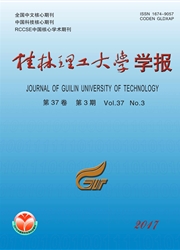

 中文摘要:
中文摘要:
将某60层超高层建筑简化为带两道伸臂的分析模型,基于将抗震性能影响的赘余伸臂设计成消能伸臂的理念,提出了粘滞阻尼器型与防屈曲支撑型两种新型消能伸臂体系,对其在地震波作用下的层间位移角、楼层加速度和能量响应进行分析。结果表明:新型消能伸臂体系对层间位移角和楼层加速度均有较好的减震效果;防屈曲支撑型对减少层间位移角响应更为有效,而粘滞阻尼器型则对楼层加速度的减震效果略优。两种新型消能体系均能减少地震输入能和充分发挥阻尼器耗能,从而有效减少结构动能和应变能,其中尤以防屈蓝支撑型为优。因此,在工程实践中优先推荐使用防屈曲支撑型,对舒适度要求特别高的可选用粘滞阻尼器型。
 英文摘要:
英文摘要:
A sixty-story super high-rise building is simplified as a two outriggers analyzed model. The idea of seismic redundant outriggers designed as damped outriggers is presented. Two novel damped outrigger system, viscous damper (VD) type and buckling restrained brace (BRB) are proposed. The responses of story drift, story acceleration and energy distribution between the novel damped outrigger systems and the traditional seismic structure under earthquake records are compared. Results show that both can reduce story drift and story accel- eration responses. BRB type outrigger system performs much better in terms of story drift, while VD type out- rigger system achieves better performance in terms of story acceleration. The new energy dissipation systems can reduce the seismic input energy and dissipates energy with dampers, and thus reduce structural kinetic energy and strain energy effectively, especially for BRB type outrigger system. Therefore, the BRB type is prior to the VD type in practice for high comfort evaluation.
 同期刊论文项目
同期刊论文项目
 同项目期刊论文
同项目期刊论文
 An input-to-state stabilizing control approach for non-linear structures under strong ground motions
An input-to-state stabilizing control approach for non-linear structures under strong ground motions A Genetic Algorithm-based Two-phase Design for Optimal Placement of Semi-active Dampers for Nonlinea
A Genetic Algorithm-based Two-phase Design for Optimal Placement of Semi-active Dampers for Nonlinea Seismic failure mode improvement of RC frame structure based on multiple lateral load patterns of pu
Seismic failure mode improvement of RC frame structure based on multiple lateral load patterns of pu 期刊信息
期刊信息
